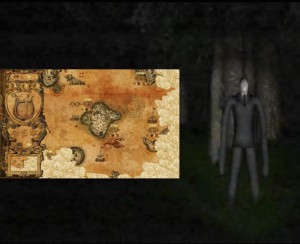Team name: Vex (Virtual EXperience. Clever, I know)
Jacob Hanshaw, Corey Groom, Giang Nguyen
Equipment: Oculus Rift
General Description:
We want to build a multi-player virtual experience. Creating immersion through story and emotion is likely too complex for class and requires more assets. As such our experience will likely focus on action.
Skills:
Jacob- General Programming, Unity and C# Experience
“I’m confidant that I can design a good game, create environments, and use general physics.”
Corey- General Programming
Giang- General Programming
Challenges:
Creating realistic character models is a monumental task in and of itself. Animating them correctly and avoiding uncanny valley is a million dollar industry.
Online real-time multiplayer is one of the biggest challenges in computer science today. It involves keeping multiple complex physics systems in perfect synchronization.
Creating and using portals properly is something that a lot of the smartest programmers in the world (at Valve) spent a lot of time doing and released research papers about. Making a seamless transition from one place to another is hard. The portal must show the proper perspective to potentially multiple people looking at it. Without perspective differences it will be a painting instead of a window. Also, the transportation must be seamless or other players will notice the portal. This means that the player must be in two places at once while transitioning through the portal. If in one place or the other, then there will be a discontinuity in the player’s body.
Creating an FPS by itself means unique gun holding physics, gun animations and reloads, and shooting physics. Shooters in particular are hard for real-time online multiplayer games as they require precise timing.
What is your first step:
Research!
I researched these concepts and found that there are existing libraries that may help abstract some of the harder details of this project. Though experts with one of the tools said it would take 2 weeks to make a simple offline FPS level, so this project may still be significantly out of scope.
Option B: A God Among Men game without portals
Option C: A God Among Men game without portals or internet
Option D: Create levels for Portal 2 and play them on the Rift (Likely actually possible!)
Games:
Runner and Gunner

Runner and Gunner takes inspiration from Mirror’s Edge, Portal, The Matrix, and Inception to create a novel gameplay experience.
The idea is that there are two players:
A runner whose goal is to get to a predetermined location as soon as possible. The runner can see and turn off or on pre-existing portals placed around the world.
A gunner whose goal is to shoot the runner. The gunner may get trapped in a certain area due to portal placement. It is the gunner’s job to notice when they are trapped and take control of another person around the runner.
Potential features and difficulty adjustments could involve allowing players to place portals, making the runner’s goal a moving target, giving the runner multiple goals, limiting the number of portals a runner can use, changing the runner’s speed, adding camera shake to the gunner’s gun when moving, limiting the gunner’s ammo, showing the gunner the runner’s target(s) or not, allowing the gunner to destroy the runner’s target(s), etc.
Chill AKA Fiend AKA Horror Game
or
A God Amongst Men

Other ideas are to create a game (Chill) to scare the Occulus Rift user. This design is more iterative as a scary game could be created, then another player controlling the scariness locally could be added, and finally the game could be made online multiplayer.
The final idea is that Chill could be slightly distorted to a mythology style game where players fight ginormous enemies. The optional extra player could then control the enemy, add extra enemies, or provide aid in the form of power-ups.




